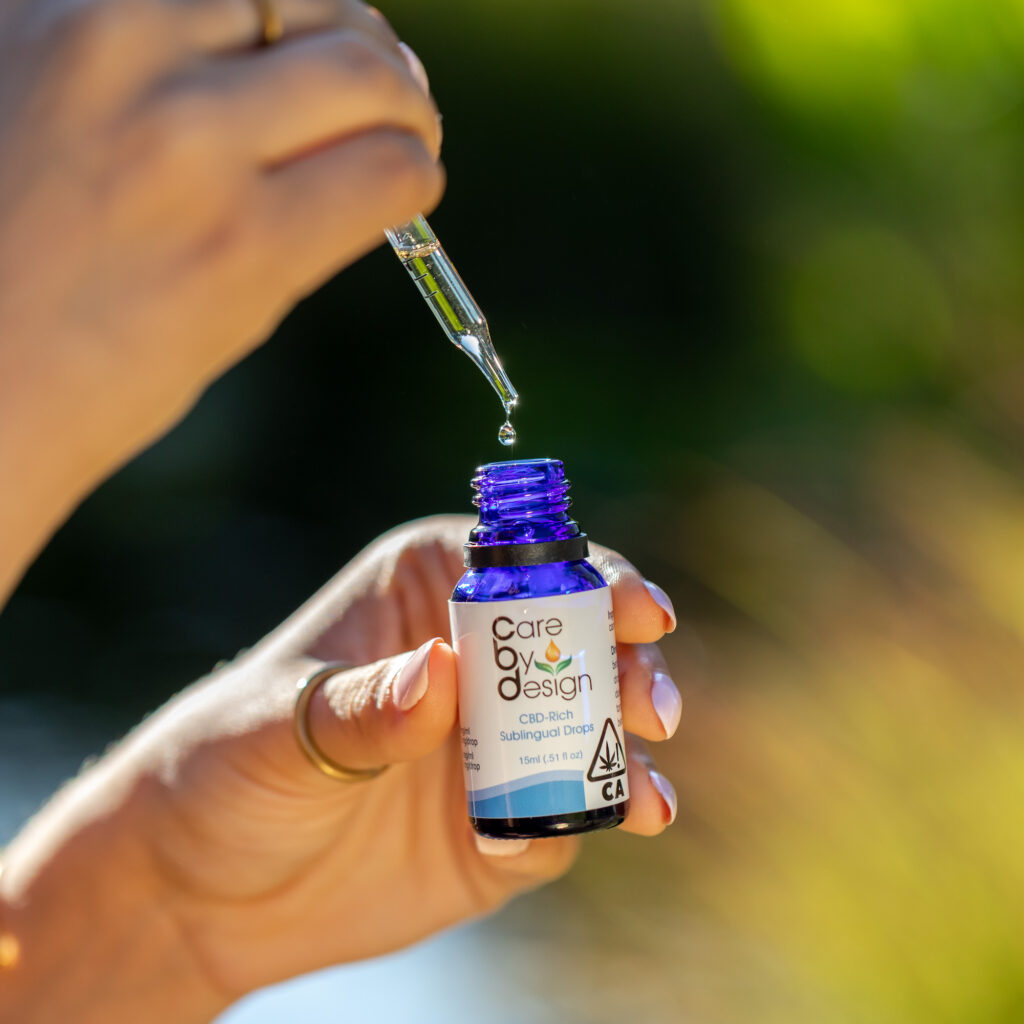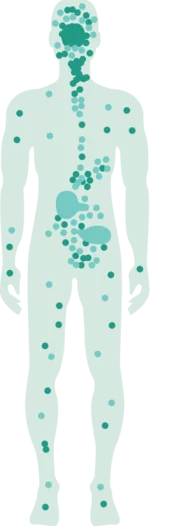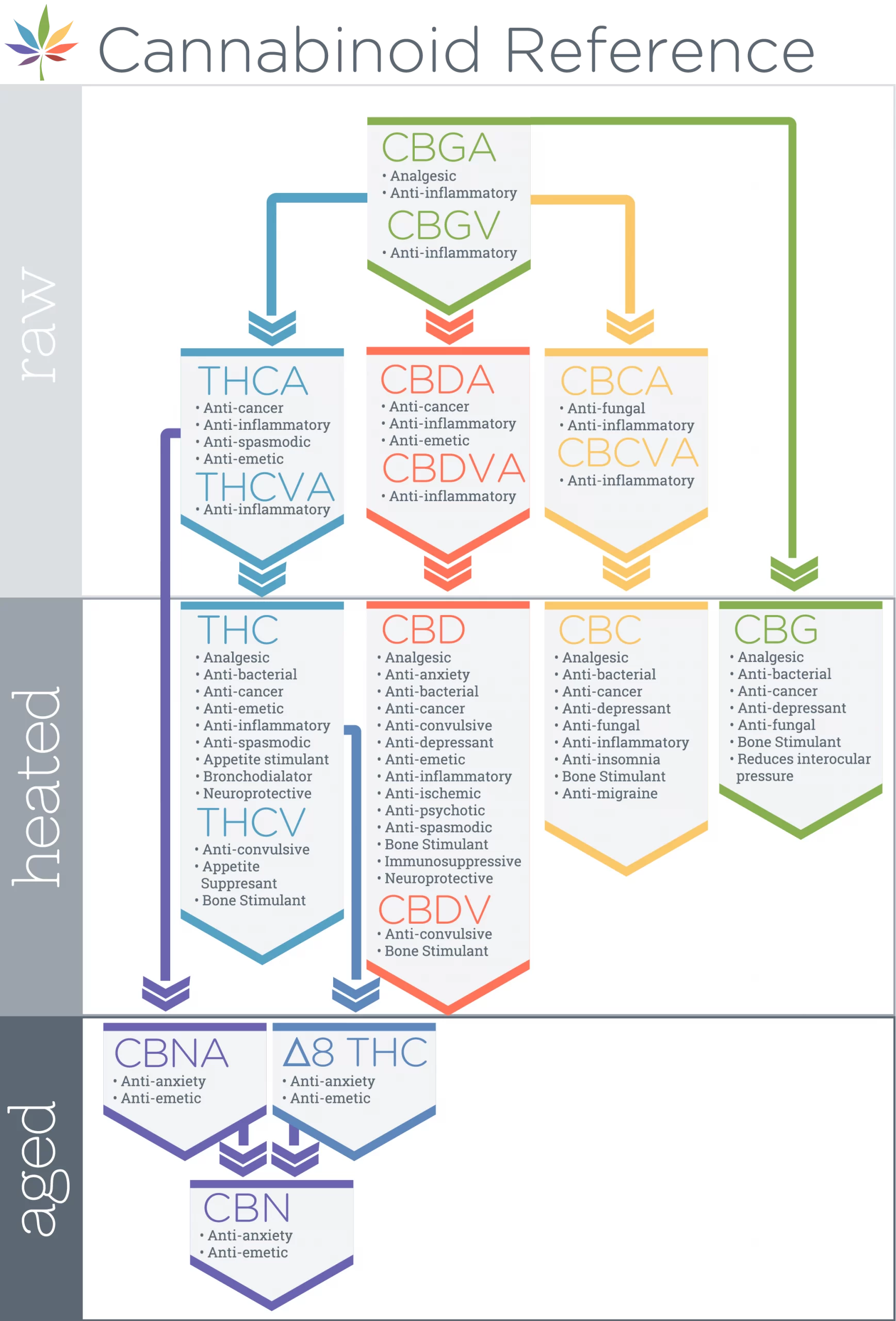
The Secret Life and Hidden Health Benefits of Cannabinoid Compounds
Shop NowAt Sava, we love sharing the numerous ways in which cannabis can be used for beneficial purposes.
That’s why we’re taking a deep dive into some of the most promising major cannabinoid compounds aside from CBD and THC.
By discovering new aspects of this remarkable plant, you can enjoy the health benefits of cannabinoids and explore new ways of incorporating cannabis into your lifestyle.
Cannabinoids have wide-ranging health benefits. People have been using cannabis for centuries to treat pain and inflammation and more recently it has been used for promoting or decreasing appetite as needed, regulating metabolism, preventing neuronal cell death, fighting cancer, and treating antibiotic-resistant bacteria.
Sava has a range of cannabinoid-specific products in our San Francisco online dispensary. Once you understand the unique health benefits of cannabinoids, you can easily find the right products by selecting your preferred cannabinoids in our shop filter.


What Are Cannabinoids?
Technically cannabinoids are organic compounds (molecules containing carbon, hydrogen, and oxygen) found in the cannabis plant. But if you asked *us* what cannabinoids are, we’d say they’re the part of the plant where the magic happens.
Cannabinoids are organic compounds that are structurally similar to what our body naturally produces (endocannabinoids) and can bind to receptors located in our brain (CB1 receptors) and body (CB2 receptors). The entire system of endocannabinoids, enzymes, and receptors is called the endocannabinoid system. It helps the body maintain internal stability and health.
Although THC and CBD are the most well known, scientists so far have isolated at least 113 different cannabinoids from cannabis.
That’s the technical side of things, but what you’re probably really interested in are the effects of cannabinoids, and how they make you feel.
Cannabinoids have different effects, depending on which neural receptor they bind to. For example, THC binds to CB1 and CB2 receptors in the brain, producing euphoric effects, but CBD binds to different receptors which don’t trigger the “high” associated with THC.
Part of the specific experience of various cannabinoids lies with their synergistic interaction with terpenes. This is called “the entourage effect,” meaning that each terpene adds a layer of complexity to the overall experience. You’ll often hear people say that cannabinoids are like the key that turns on the car, but terpenes are the steering wheel that guides the journey.
The Most Popular Cannabinoids
The most widely known cannabinoids are the lovely THC and CBD. While many cannabinoids are psychoactive, THC is the main one that produces the creative, euphoric, mind-altered state when consumed. On average, THC-dominant strains of cannabis will have 18–20% THC by dry weight, meaning about one fifth of the entire plant is made up of the THC molecule.
CBD is the second-most studied and talked about cannabinoid compound found in cannabis. Many strains that have balanced CBD and THC will hover around 6–12% each. Because CBD affects the brain, it is considered psychoactive, but without the high feeling you get from THC.
While CBD and THC have the lion’s share of the spotlight in the cannabis world, many other cannabinoids have their own particular effects and benefits.

Nine Major Cannabinoids
Like other organic compounds, cannabinoids are divided into common subclasses. Many plants outside of cannabis itself, including cacao and black pepper, contain some classes of cannabinoids.
Let’s take a look at some of the most well-known cannabinoid classes found in cannabis so you can better understand the wide range of potential health benefits researchers have discovered from studying this powerful plant.
CBN: Cannabinol
Cannabinol’s claim to fame is that it was the first cannabinoid to be isolated for study in the late 1800s. Although psychoactive, it is very weakly so.
In contrast to CBG, cannabinol has relatively higher quantities in older cannabis. When cannabis is exposed to air, the THC becomes oxidized and forms into CBN, which is why that super old stash that’s been sitting on your shelf for three years isn’t as potent anymore (may we suggest a replacement with better cannabis?).
Let’s explore the benefits of CBN.
CBN offers calming and relaxing effects to aid your good night's sleep. Discover blissful sleep with PLUS CBNRelief Lychee Gummies. These gummies are scientifically formulated with 3mg CBD, 2mg CBN, and 1mg THC to support our natural circadian rhythm and help you fall asleep faster and wake up feeling refreshed.
You can also drift into slumber with KIKOKO Sleep Cannabis-Infused Botanical Mints. Formulated with 3mg CBN, 2mg THC, and 1mg melatonin and enhanced with organic peppermint, chamomile, rose petal, and black pepper extract, these mints will surely send you off to dreamland.
Like CBG, CBN has strong antibacterial properties and even has displayed potent effects against antibiotic-resistant bacteria. In other tough-to-treat diseases, CBN was shown to be effective in reducing chronic inflammation. A study on mice also showed that CBN delayed symptoms of amyotrophic lateral sclerosis (ALS), a motor neuron disorder.
Finally, the last but not least benefit of CBN is its ability to stimulate appetite which is helpful for patients with cancer; certain eating and mood disorders; and effects related to aging.
Delta-8 THC: Delta-8 Tetrahydrocannabinol
Delta-8 THC is famous for being Delta-9 THC’s legal counterpart. What makes it legal is the way in which it is extracted. Although it is naturally found in cannabis, a unique extraction process derives Delta-8 THC from CBD, which producers usually obtain from industrial hemp, rather than cannabis. Because these extractions come from a source that has less than 0.3% Delta-9 THC, it is legal.
Delta-8 THC is in fact psychoactive, although not as intense as its Gemini-twin THC. People who have tried Delta-8 have reported that the effects are about half as strong as Delta-9 THC, and it has more in common with CBD, promoting relaxation, calmness, and stress reduction. In addition, it doesn’t have some of the impairment associated with Delta-9.
Share an elevated experience with WUNDER Higher Vibes cannabis-infused drinks with your friends. Effervescent and crafted with all-natural fruit juice, 10mg Delta-8 THC, and 10mg Delta-9 THC, you will enjoy a delightful shift in perception followed by waves of calm. Pick your favorite one out of four different flavors, Blood Orange Bitters, Lemon Ginger, Watermelon Basil, and Grapefruit Hibiscus.
THCV: Delta-9 Tetrahydrocannabivarin
This mouthful of a cannabinoid is very similarly structured to THC but it has a 3-carbon group on its side chain, instead of a 5-carbon group, therefore it generates different properties. Surprisingly enough, this cannabinoid is federally legal, as long as its derived from hemp rather than cannabis; however since hemp products are unregulated it’s always best to purchase cannabis derived varieties to ensure the highest quality possible.
Anecdotally, some people have reported a mild, energetic euphoria. This may be why most THCV products are marketed as providing an energy boost and greater focus. Though early research shows that THCV is non-psychoactive, it offers a number of therapeutic benefits, including aiding in appetite suppression, regulating metabolism, and regulating glucose, all of which means that it has potential to be used as a treatment for obesity and type-2 diabetes.
The link between THCV and diabetes is only becoming clearer with new research. THCV helps decrease blood glucose levels and increase insulin production. THCV may also help diabetes by regulating fat content in the body.
In addition to helping manage diabetes, THCV can encourage bone growth. More research is emerging that shows that our endocannabinoid system helps regulate bone mass, bone loss, and bone cell function in general. In short, this cannabinoid has the potential to treat bone diseases.
We have a variety of tinctures, pre-rolls, and edibles rich with THCV, so explore Sava’s hand-curated selection to find the best product for your needs.
Love Colitas THCV Dark Chocolates offer a particularly delicious delivery method. Rich chocolate paired with creamy peanut butter and a 10:1 THC:THCV ratio will give you a burst of energy while staving off the munchies. These are great for anytime you need an extra boost.
CBDa: Cannabidiolic Acid
CBDa is the intermediary between Cannabigerolic Acid and CBD. CBGa loses a CO2 group to form CBDa. Then, when CBDa loses the acid group in decarboxylation (just like with THCa and THC), it becomes CBD. Think of CBGa as the grandparent, CBDa as the parent, and CBD as the final generation. Although it is converted to CBD with heat, exposure to the air over time will also convert CBDa into the more well-known compound.
CBDa is the most prominent cannabinoid compound in hemp plants used for fiber and seed oil and one of the most versatile. People have found that CBDa benefits may include being anti-carcinogenic, anti-inflammatory, anti-emetic (which is essentially anti-nausea and anti-vomiting), and anticonvulsant.
CBDa likely works as an anti-inflammatory by blocking the activity of certain enzymes. When we have inflammation, it’s our body’s way of protecting and healing itself. Enzymes like cyclooxygenase-2 (COX-2) are released to make lipids that promote inflammation. However, prolonged inflammation isn’t good (and it hurts!). So what CBDa does is block the COX-2 enzyme from interacting with the endocannabinoid system. So it’s like a great big shield to block the proteins that make the lipids that produce inflammation. Thus, people report it as an excellent cannabinoid for pain relief. There are other CBDa benefits as well.
Although THC and CBD have received a lot of attention as treatments for nausea and vomiting, CBDa has been shown to be a more powerful and effective way to manage nausea, vomiting, and even anticipatory nausea. This is because CBDa has greater affinity for 5-HT(1A) neural receptors in the brain.
Each of these cannabinoids acts as a key that fits into a particular lock, aka the neural receptor. The 5-HT(1A) receptors are involved in binding serotonin, a neurotransmitter that regulates vital processes like eating, sleeping, and digestion. When the body experiences stress (from sickness, radiation, chemotherapy, or any other stressor), the brain basically starts pumping out more serotonin. However, too much serotonin isn’t good because it then causes nausea and vomiting (you know how if you’re stressed you have an upset stomach? That’s serotonin at work).
So what CBDa does is it interacts with the 5-HT(1A) receptors, which helps regulate the amount of serotonin released in the body. Scientists are unsure of the exact method of interaction in the brain with the receptors (which is pretty cool when you think about it; cannabis is way more complicated than meets the eye). However, what we do know is that CBDa has a greater affinity for the neural receptor than CBD. Like, way more, 100 times more.
This same interaction with 5-HT(1A) receptors is also what makes CBDa an anticonvulsant. In one study, CBDa showed the same levels of anticonvulsant effects as CBD, and scientists noted the efficacy of the entourage effect of combining CBDa and CBD.
Do you want to get all the benefits of CBDa? Check out Rosette CBDa Tincture. This CBDa tincture is non-psychoactive and is made from specially formulated, top-shelf cannabis extract combined with coconut MCT oil for easy digestion and rapid absorption.
THCa: Tetrahydrocannabinolic Acid
Tetrahydrocannabinolic Acid (THCa) is the non-intoxicating form of THC found in the trichomes of cannabis (those little hair-like structures on the flower). In organic-chemistry speak, it contains a carboxyl group, which makes it an acid. Because THCa has this extra carbon-based group, its structure doesn’t fit into CB1 receptors, and that’s why ingesting raw cannabis won’t be intoxicating.
There are two main ways THCa loses its carboxyl group: heat and time. Heat acts as an accelerant to the process, which is why raw cannabis flower must be heated for the consumer to experience its effects. Once THCa ditches the carboxyl group, (creatively named “decarboxylation”) it becomes our known and loved THC.
Research has shown that THCa has potential benefits for treating chronic, inflammatory diseases such as rheumatoid arthritis, and neurodegenerative diseases, such as multiple sclerosis, Alzheimer’s, and Parkinson’s. It may also assist with reducing nausea-induced conditioned gaping. In addition, THCa was shown to have antiproliferative properties, meaning that it inhibits the reproduction of malignant cell growth, which may be particularly helpful in treating cancer.
THCa was actually more highly recommended than CBD as a treatment for Irritable Bowel Diseases, such as Crohn’s disease. THCa was shown to have anti-inflammatory properties on colon epithelial cells in a study using Cannabis Sativa extracts. Because of its anti-inflammatory properties, this is an ideal cannabinoid for pain relief.
We recommend Stone Road’s Tangie Jack THCa Diamond infused pre-rolls for potent pain relief. With the right combo of THC and THCa, you’ll experience energy and motivation to go through your day. If smoking is not your thing, we’d recommend a wonderful THCa tincture by Rosette, however make sure it is stored out of sunlight and away from heat to remain non-psychoactive.
Cannabigerolic Acid (CBGa): The Mother of Cannabinoids
While THC is the most well-known, Cannabigerolic Acid (CBGa) is arguably the most important of all because it is the “Mother of Cannabinoids,” and there are numerous benefits associated with CBGa. Without CBGa, no other cannabinoid compound would even exist.
CBGa is the original molecule, and after numerous complex chemical conversions (through heat or light exposure), it eventually is formed into other molecular structures, like THC, CBD, and other cannabinoids.
If that wasn’t enough to make this cannabinoid stand out, preliminary research has linked other benefits of CBGa with anti-inflammatory and antioxidant effects, potential benefits for diabetic patients, and reduced seizures in epileptic patients. In one study from 2013, CBGa was shown to be effective in reducing bowel inflammation in mice.
For diabetic patients, a recent study demonstrated that CBGa had a significant impact on the reduction of aldose reductase (an enzyme that complicates diabetes). Another study showed that CBGa helps with the metabolism of lipids, which means that this cannabinoid has the potential to help with numerous metabolic diseases, not just diabetes, adding another benefit to CBGa.
Finally, cannabis has been used to treat epilepsy for thousands of years. Its link with CBD clued scientists into how other cannabinoids like CBGa can reduce epilepsy in diseases like Dravet Syndrome. In a study with mice, CBGa showed a potent reduction in seizures in the furry test subjects.
In short, CBGa is one of the most important biochemical compounds of cannabis, not only because other cannabinoids stem from it, but also because of the benefits of CBGa as an antioxidant, anti-inflammatory, metabolic aid, and seizure reducer.
CBC: Cannabichromene
Cannabichromene is another “grandchild” of CBGa, and like CBGa, numerous benefits are linked to CBC cannabinoid. CBGa is converted into Cannabichromenic acid, then again into CBC. This conversion happens when CBGa is exposed to heat or ultraviolet light. CBC cannabinoid is non-psychoactive, as it binds poorly to the CB1 receptor in the brain. Like many cannabinoids, it works synergistically with CBD and THC to produce greater effects, and the clinical health benefits of CBC have been studied extensively.
Take managing anxiety, depression, and stress, for example. Researchers demonstrated that the CBC cannabinoid was actually 10 times more effective than CBD in reducing anxiety and stress. In addition, CBC works with CBD and THC in the entourage effect to be an effective antidepressant.
CBC binds to TRPV1 and TRPA1 receptors, which are linked to pain perception; therefore it takes up the space that otherwise would have been devoted to molecules that cause perception of pain, so it can be used as an analgesic, making this an excellent cannabinoid for pain relief.
One extremely important practical benefit of CBC is the potential for it to fight breast cancer. One of the body’s naturally occurring endocannabinoids is anandamide, which is known as the “bliss” molecule because it is a mood-enhancing neurotransmitter. It’s part of the reason our mood is uplifted whenever we consume cannabis. Anandamide also helps regulate inflammation and neuron signaling. What it does to cancer cells is inhibit or stop growth and migration to other parts of the body.
When the brain is finished with anandamide, it “reuptakes” it into the cells. The brain says, “We’re finished, time to put this molecule back on the shelf.” CBC cannabinoid essentially says, “Hold on, we’re not finished yet,” and blocks the reuptake of anandamide, leaving more of it to float around in the body’s neural system. The more anandamide there is, the more effectively it reduces the ability of malignant cells to proliferate, thus the potential to fight breast cancer.
Recent studies also showed that CBC may promote antimicrobial, anti-inflammatory, analgesic, and neurogenesis activity. This cannabinoid was superior to phenylbutazone (NSAID pain reliever and anti-inflammatory). Finally, because it has anti-inflammatory properties, another benefit of CBC is inhibiting acne.
CBG: Cannabigerol
CBG or Cannabigerol is another non-psychoactive cannabinoid that has been shown to have neuroprotective, anti-inflammatory, and antioxidative properties. It is the non-acid form of CBGa, the mother of cannabinoids. It is relatively rare, as compared with CBD or THC. In most fully developed plants, only 1–1.5% of CBG exists, that’s because most of CBG has already been converted to other cannabinoids. For that reason, CBG is extracted from young cannabis plants, as there are higher levels of this cannabinoid compound. But because of numerous CBG benefits, scientists are trying to find new ways of extracting this cannabinoid.
CBG binds to both CB1 and CB2 receptors, but CBG acts as a competitive antagonist at CB1 receptors. Similar to THC, it binds to the neural receptor CB1 but it does not produce an altered state of mind because it effectively tells the brain to not fire its neuron.
Numerous studies have shown the potential medical benefits of CBG to be as wide ranging as treating glaucoma, inflammatory bowel disease, and Huntington’s disease, as well as having anti-bacterial and cancer-fighting properties. For glaucoma patients, THC has long been the shining star of the treatment, but one study showed that CBG was synergistically effective along with THC to treat glaucoma by easing intraocular pressure.
Because of CBG’s anti-inflammatory properties, researchers concluded that this cannabinoid should be used for clinical treatment of Irritable Bowel Diseases, and any cannabinoid that is effective as an anti-inflammatory is also a great cannabinoid for pain relief.
Finally, in one study, an important benefit of CBG was very specific: CBG inhibited the growth of colorectal cancer cells. Not only did it stop the growth of cells but it also made other malignant cells experience apoptosis (cell death).
Curious about the health benefits of CBG? Check out our Mindset CBG Chocolate. The fresh mint balances with the smooth chocolate and provides an uplifting mindset. For rejuvenation, try Wyld CBG Gummies. Each has 10mg CBG and 10mg THC for the experienced enjoyer (our suggested serving size is half a gummy).
CBDV: Cannabidivarin
Cannabidivarin is a homolog to CBD, which means that it is structurally very similar, with only its side chain slightly shortened. Up until now, many of the cannabinoids we’ve looked at have come from Cannabis sativa strains. However, CBDV is most commonly found in Indica strains. Like many other cannabinoids, it is non-psychoactive.
Its medicinal properties include providing symptom relief from seizures, as one study showed a 40% reduction in seizures in the study group.
In addition, some studies link CBDV with effectiveness in treating Autism Spectrum Disorder. Moreover, some studies using animal test subjects show that CBDV can help ease some common ASD behaviors, such as irritability, anti-sociablility, and repetitive actions. Research is still currently in development. Other trials have been developed to test whether it can ease behavioral traits associated with Prader-Willi Syndrome (which are similar to those of ASD).

What Cannabinoid Products Will Best Support Your Lifestyle?
There you have it! A guide to the most famous and well-researched cannabinoids. As these many studies have shown, cannabinoids have a myriad of health benefits. Scientists and researchers are exploring the 100 known cannabinoids, and it will be interesting to see what other properties they discover.
It’s amazing to see that even with such little research, so many powerful medicinal applications have already been discovered. Given the federal prohibition on cannabis, it makes it much more difficult to study the far ranging benefits and artificially limits the pace of progress. With country-wide legalization we may be able to more quickly unlock the remaining secrets of this magical plant and understand the full power of these therapeutic cannabinoids more deeply.
For now, we hope you enjoy the elevated experiences and friend-like recommendations that Sava brings you every day. Explore our online dispensary where you can filter by the type of cannabinoid you wish to try and choose the perfect product to fit your needs. Happy hunting!

 First, create your Sava account.
First, create your Sava account. Your $40 discount will apply automatically on your first order.
Your $40 discount will apply automatically on your first order.